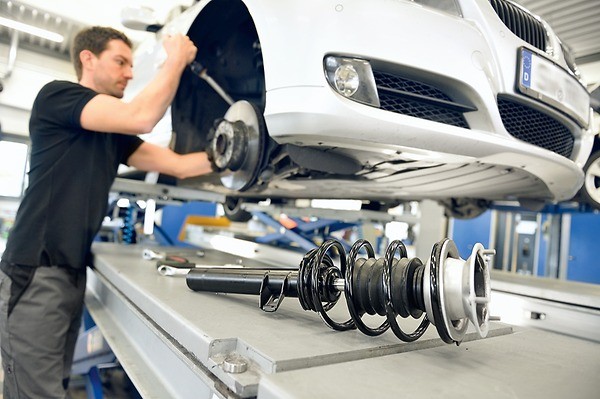
Shock absorbers (also known as dampeners) are an essential part of your suspension system. Dampeners are hollow, telescopic rods filled with oil – their purpose is to keep your vehicles wheels in contact with the ground as the car is moving, they do this by controlling or ‘dampening’ the movements of the wheels. Shock absorbers come in an assortment of sizes and styles, each made for a specific purpose or car model. If you’re online looking for replacement Shock Absorbers, make sure you order products only from reputable online providers with worldwide delivery like Trodo.eu.
Most manufacturers recommend replacing dampeners after every 80,000 kilometers, though this guideline is more in their interest than your own. The truth is a dampeners lifespan depends on many variables, such as the types of terrain you’re driving over, the weather conditions and how fast you drive. Your dampeners will last much longer if you’re normally cruising over smooth tarmac on a warm day than if you often have the pedal to the floor, driving over snow covered bumpy ground. Wet conditions and colder temperatures will have an adverse effect on your dampeners, corrosion will occur much quicker – leading to cracks and breakages.
Indications that your dampeners need changing
Look under your wheel arches, you can locate the dampeners encased within the large springs, behind your wheels. If you see any noticeable black oil stains, you should take your vehicle to the nearest garage ASAP. Shock absorbers leaking oil is an immediate MOT fail, not to mention an indication that they’re not working as intended.
Knocks or rattles originating from your suspension are usually a sign that your shock or suspension bushes are in need of replacing, failing to do so could have a knock on effect for other vital parts which make up your vehicles suspension. Another clear sign that something isn’t right with the dampeners is ‘nose diving’ when breaking heavily. If you notice the cars front visibly dipping more than usual, make sure to check the front dampeners.
One simple test is to push down hard on each corner of your vehicle, if it ‘bounces’ more than once before settling – then its probably time to change the effected dampener.
Potential dangers associated with faulty dampeners
There are many potential threats whilst driving associated with shock absorbers in need of replacing, such as a risk of skidding in the wet, a loss of control when cornering or when driving in cross winds, reduced braking efficiency and a reduction in the effectiveness of your vehicles ABS (Anti-lock Braking System). Generally speaking, dampeners performance will wear slowly and imperceptibly over time – meaning drivers begin to compensate for these losses in control. Therefore it is wise to check your dampeners every 30,000 kilometres or so.
It isn’t only dangers to yourself and your passengers which you need to consider, but other drivers also. A faulty dampener may lead to headlights appearing at an ‘uneven’ level to approaching motorists, possibly dazzling them or causing a distraction.
Change your shock absorbers in pairs
Unlike other parts of your vehicle shock absorbers generally wear down an an even rate. Should you decide to only change one of your shock absorbers, it may actually lead to more problems such as a loss of control whilst cornering, an uncomfortably uneven ride or oil leaks from the opposite shock absorber, due to an unbalanced load. Therefore, its advisable to change your dampeners in pairs, to avoid any handling problems which might arise due to an imbalance.
